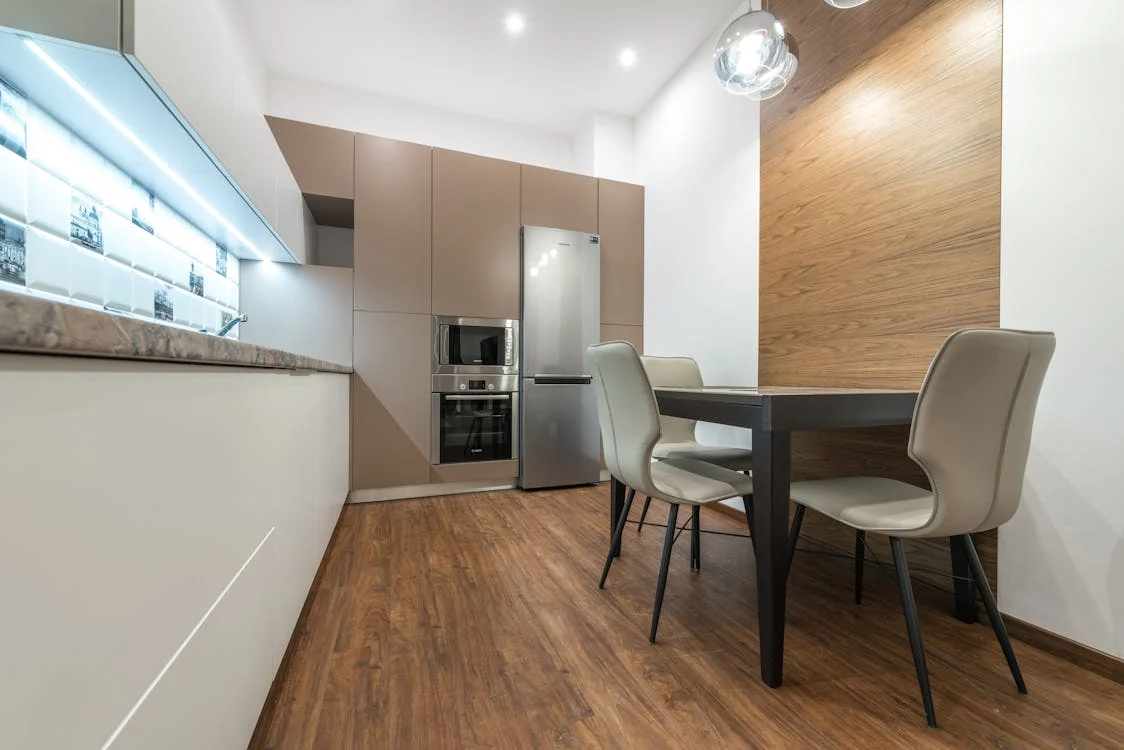
Why Reclaimed Barn Wood is One of the Most Sought-After Flooring Choices
In recent years, reclaimed barn wood has become one of the most desirable flooring materials on the market, and it’s easy to see why. This

In recent years, interior design trends have moved towards more sustainable and natural materials, and one of the most popular innovations has been the use of reclaimed wood. Known for its rustic charm and unique character, reclaimed wood has found its place in a variety of design elements, from furniture to flooring. However, one area where reclaimed wood has truly begun to shine is in the use of feature walls. As a stunning alternative to wallpaper, reclaimed wood adds texture, warmth, and individuality to any room, making it a perfect choice for homeowners seeking to create a striking yet environmentally conscious living space.
Reclaimed wood is wood that has been salvaged from old buildings, barns, factories, and other structures that are no longer in use. Often, this wood has a rich history, with natural wear and patina that gives it a sense of timelessness and character. When used as a feature wall, reclaimed wood offers a distinctive look that cannot be replicated by mass-produced materials. No two pieces are the same, and the varying grains, knots, and colours create a truly one-of-a-kind display.
Not only does reclaimed wood offer aesthetic value, but it also provides environmental benefits. By repurposing old wood, homeowners are reducing the demand for new timber, helping to preserve forests and minimise waste. This eco-conscious choice aligns with the growing desire to adopt sustainable practices in all aspects of life, including interior design.
While wallpaper is often chosen for its versatility and ability to inject colour and patterns into a space, it lacks the tactile appeal and texture that reclaimed wood brings. Wallpaper can sometimes feel flat and impersonal, whereas a reclaimed wood feature wall adds depth, warmth, and authenticity to a room. The texture of the wood creates an organic, lived-in feel, making it perfect for spaces that aim to evoke a sense of comfort and intimacy.
In addition, reclaimed wood offers greater longevity compared to wallpaper, which can peel, fade, or tear over time. A well-maintained wood feature wall, on the other hand, can last for decades, even improving with age. The natural patina of the wood only deepens over time, enhancing the beauty of the wall. Whether you are designing a modern living room, a rustic bedroom, or a stylish office, reclaimed wood adds a timeless quality that can evolve with your style.
Reclaimed wood works well with a wide range of interior design styles. In modern settings, the natural beauty of the wood contrasts beautifully with sleek, minimalist furnishings, adding a touch of warmth to a clean, open space. In more rustic or industrial settings, the raw, weathered look of reclaimed wood complements other vintage elements, creating a harmonious balance between old and new. It can also work wonderfully in coastal or farmhouse interiors, where natural materials are celebrated for their authenticity and timeless appeal.
Another benefit of reclaimed wood feature walls is the ease of integration with other materials. It can be combined with metal, stone, or glass to create a striking contrast, or paired with soft textiles such as cushions and throws to bring a sense of cosiness to a room. Its adaptability means it can be used in any space, whether as an accent wall behind a fireplace, a focal point in a hallway, or as a backdrop in the bedroom.
For homeowners seeking a beautiful, sustainable, and unique alternative to traditional wallpaper, reclaimed wood is an excellent choice. It offers a natural, warm, and textured finish that adds character to any space while promoting eco-friendly design principles. Whether in a contemporary or traditional setting, reclaimed wood as a feature wall provides the perfect combination of style, durability, and sustainability, making it a standout option for any interior.

In recent years, reclaimed barn wood has become one of the most desirable flooring materials on the market, and it’s easy to see why. This

When restoring a period property, authenticity is everything. Choosing the right materials can significantly impact the look and feel of a historic home. One of

How to Incorporate Reclaimed Wood Flooring in Commercial Spaces & Offices Reclaimed wood flooring is becoming increasingly popular in commercial spaces and offices — and

How to Use Reclaimed Wood Offcuts for DIY Projects & Home Decor 1. Create Unique Wall Art DIY Reclaimed Wood Offcut Projects are perfect
Privacy Policy | © Copyright 2024 Reclaimed Wood Flooring UK Limited | Company No: 14666179